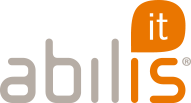Should the Existence of an OMS User Community Be Part of the CIO’s Vendor Evaluation Criteria?
- By Ken McGovern
- February 26, 2020
- Print This Article

 Corrections agency-based teams that manage and influence the future of their offender management system can derive valuable benefits from participation in their vendor’s user group.
Corrections agency-based teams that manage and influence the future of their offender management system can derive valuable benefits from participation in their vendor’s user group.
The breadth and complexity of information demands within the modern corrections enterprise is extraordinary. Across some 17 standard business processes, thousands of officers and staff can generate millions of data transactions on a daily basis within a single agency. That information is then used by staff at all levels to make decisions that directly impact offender and officer safety, operational security, and improve offender outcomes. It’s a reality that has driven the growth of purpose-built offender management systems (OMS) over the last 30 years, and an increase in the emergence of commercial-off-the-shelf (COTS) applications over the last decade. Indeed, most corrections CIOs will agree that the OMS represents the single most valuable information asset serving the agency today.
Not surprisingly, the procurement process for such a system is lengthy. It involves inputs from numerous, diverse stakeholders within the agency and often across government. Defined technical and functional requirements often surpass 1,000 in total, spanning every aspect of institutional- and community-based operations, as well as administrative and executive information demands. For the CIO, however, the challenge that surrounds the management of such vast and intricate information flows is not simply determining which solution fits best with stated requirements and budget availability.
The proactive CIO understands there is much more to consider when planning the investment and managing its benefits. The CIO knows that the modern corrections enterprise is always in flux, and the OMS must be able to adapt efficiently and quickly. Consider:
- Legislative actions, whether driven by long-term national trends or specific needs within the jurisdiction, often require rapid OMS modifications
- Operational policy changes can directly impact data requirements and workflows
- Increasing demands for data access, data exchange, reporting and analytic insight can overload teams with limited skills and resources
- Best practices and innovations presented at relevant industry conferences, such as the CTA and the ICPA, drive demand for new OMS features and capabilities
- Continuous evolution in OMS-enabling technologies, such as browsers, databases and security protocols, create time-sensitive compliance pressures from government agencies
If the investment is to deliver on long-term agency objectives, it is essential that the CIO and team members not only stay abreast of OMS vendor roadmap plans but gain some measure of influence over them as well. Does the existence of an established user community for a particular OMS help to satisfy this reality?
For the agency which has determined that a standards-based, COTS application is a prerequisite for its OMS modernization, the expectation that a vendor will have an established product roadmap process is a given. Indeed, in most RFIs and RFPs for OMS projects, it is expected that the vendor will articulate its approach to product evolution in some detail. Questions will focus on such aspects as frequency of product updates and releases, approach to introducing new functionality and enhancements into production, and the primary influence for the establishment of roadmap priorities. Yes, despite these descriptions, agency CIOs are justifiably concerned that their evolving needs will fall down the priority list as the OMS vendor continues to add new customers to its roster.
With increasing frequency, agencies right across the globe are starting to ask vendors whether they have established a dedicated user group, and what criteria are in place for membership and participation. In numerous RFPs today, such questions often align with mandatory solution requirements. These emerging requirements reflect both the growing maturity of the OMS market, as well as the strong realization that the presence of such groups increases the likelihood of continuous and substantial investment in the OMS asset.
So, what then are the main characteristics of a successful user group or user community? A Google search will return numerous points for consideration, but among the most common are the following:
-
- The purpose and intent of the community must be well-defined and consistently communicated to the customer base. For an OMS community, it needs to embrace both the commonality and uniqueness of various agencies (e.g., size, region, team structure and sophistication), and have a clear commitment to best practices in information management for corrections.
- It should be open to all customers. In the case of OMS customers, it should be open to those that are in production, as well as those that are still in the implementation phase of the investment. Every voice in the community matters, no matter how long a member has been there.
- It should foster multi-dimensional communication: vendor to community, vendor to customer, and customer to customer.
- It should embrace and encourage networking among members across all agencies, recognizing that great ideas come from direct, honest sharing of challenges and potential solutions.
- The community should have multiple, ongoing avenues for dialogue and exchange of ideas, including structured, in-person user conferences and periodic conference calls with defined segments of the user group, through which both the vendor and individual customers can present their ideas. As well, there should be an online component, often in the form of a private portal that facilitates planning, document-sharing, knowledge-sharing and discussion forums.
- The community should grow and evolve over time as the membership increases and specialization within the group emerges.
- Finally, the commitment to openness and transparency must be genuine. While the vendor should take responsibility for establishment and management of the community, the “ownership” of the group should be collective across the vendor and all its OMS customers. Members from any and all agencies should be encouraged to present ideas and ask challenging questions to ensure that the performance of the vendor and focus of the roadmap continues to understand the ever-changing requirements of the corrections domain.
For the corrections agency CIO, there are a multitude of factors to consider when making the OMS investment: technical and functional requirements, implementation approaches and costs, as well as a range of vendor characteristics. How those factors are weighted and prioritized will vary from agency to agency. In terms of OMS vendor evaluation, the presence of a well-functioning user community should carry some weight. As a complement to a well-established product management process, the existence of the user group provides a strong signal of vendor commitment to understanding and evolving with the corrections market. More importantly, it is an important de-risking factor as the agency determines its plan for a 20-year OMS commitment, suggesting as it does that the vendor is committed to the longevity and evergreen nature of its solution.
© 2020 Abilis Solutions. All rights reserved.

 0 Comments
0 Comments

